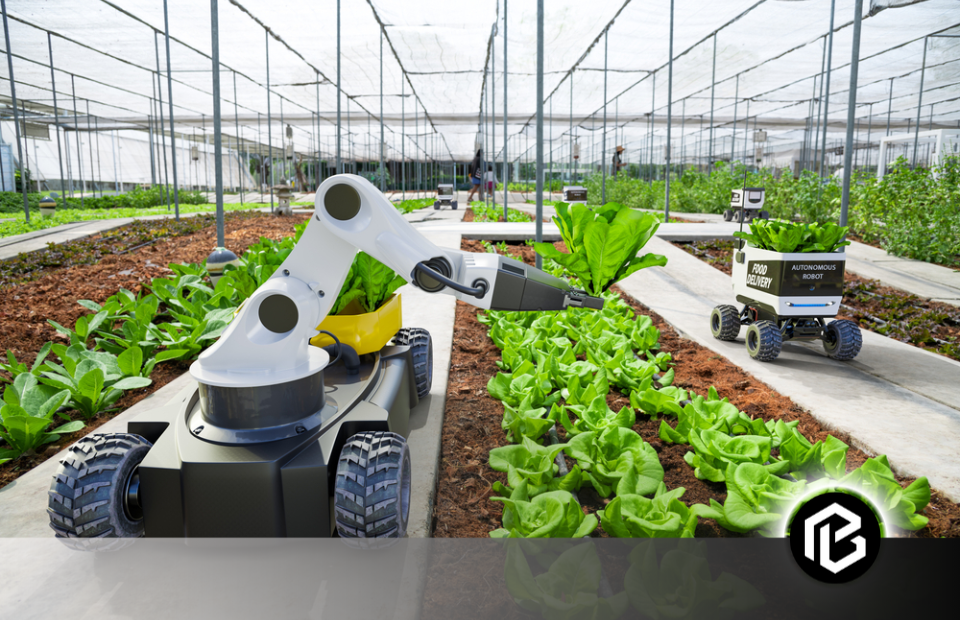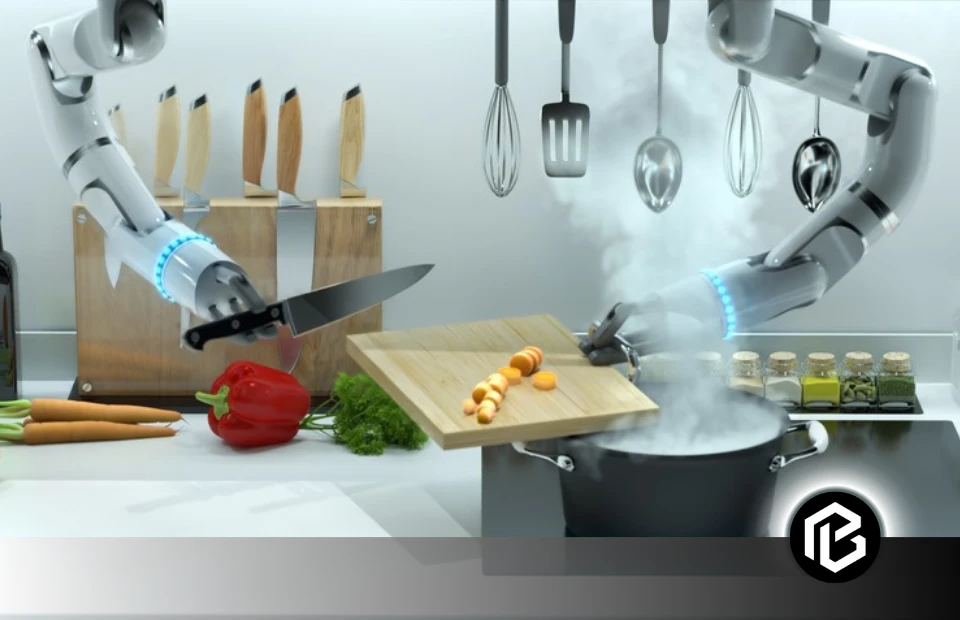Strong and healthy crops, Growing Smart! To fight starvation and foster financial growth, it’s essential to decorate agricultural practices. Ensuring meal protection necessitates the green optimization of crop production processes. However conventional farming strategies face demanding situations that restrict their performance and sustainability.
Smart farming is a new way of using technology to improve farming. It uses sensors, data analytics, and predictive modeling to help farmers make better decisions about how crops are grown and how animals are managed.
How does clever farming revolutionize conventional agricultural practices? Smart farming employs technology like sensors and facts analytics to optimize crop manufacturing. This technique permits real-time monitoring, facts-pushed decisions, and particular useful resource applications. Smart farming boosts efficiency, cuts environmental impact, and increases technique-crop yields.
Revolutionizing Crop Cultivation
Revolutionizing crop cultivation is converting the manner to develop meals. Farmers now use superior equipment and clever generations to make farming better. This performance results in greater meal manufacturing and much less waste in farming. New strategies and the use of the era make farming greener and more effective. These improvements make sure enough meals are delivered for everyone.
Automated Monitoring Systems
Smart farming makes use of sensors and information analytics. This equipment optimizes crop manufacturing by tracking soil, climate, and crop health. The sensors provide immediate updates for higher decision-making. Farmers advantage of computerized tracking, saving time and effort.
Advanced equipment like smart sensors makes farming extra efficient. Automated tracking structures act as clever eyes in the fields. They offer real-time information on soil situations and climate patterns. Data-pushed decision-making facilitates farmers tailor take care of every crop. Satellite imagery and drones play roles in tracking and estimating crop yields. This technology decorates precision, and goal interventions, and maximizes yields.
Data-driven Decision Making
Analyzing accrued information to optimize aid allocation. It’s like having a clever plan for the farm. Farmers have to observe the information from sensors to recognize what vegetation needs. It’s a roadmap that enables them to determine how much water, and vitamins the crop requires. This way, they use sources and ensure each plant receives what it desires to develop strongly.
Data-driven decisions are like customizing and taking care of every plant. Instead of giving all the vegetation the identical treatment, farmers use the data. If a crop desires extra water, it receives extra water. If it desires unique vitamins, farmers offer that. This technique helps to customize the exact care needs for vegetation. Incorporating predictive analytics is to have a crystal ball for the farm. By searching farmers can expect pests would display up. This lets them do so earlier than the pests turn out to be a problem. Staying one step ahead, shielding the vegetation, and making sure of a wholesome harvest.
Remote Sensing and Imaging Technologies
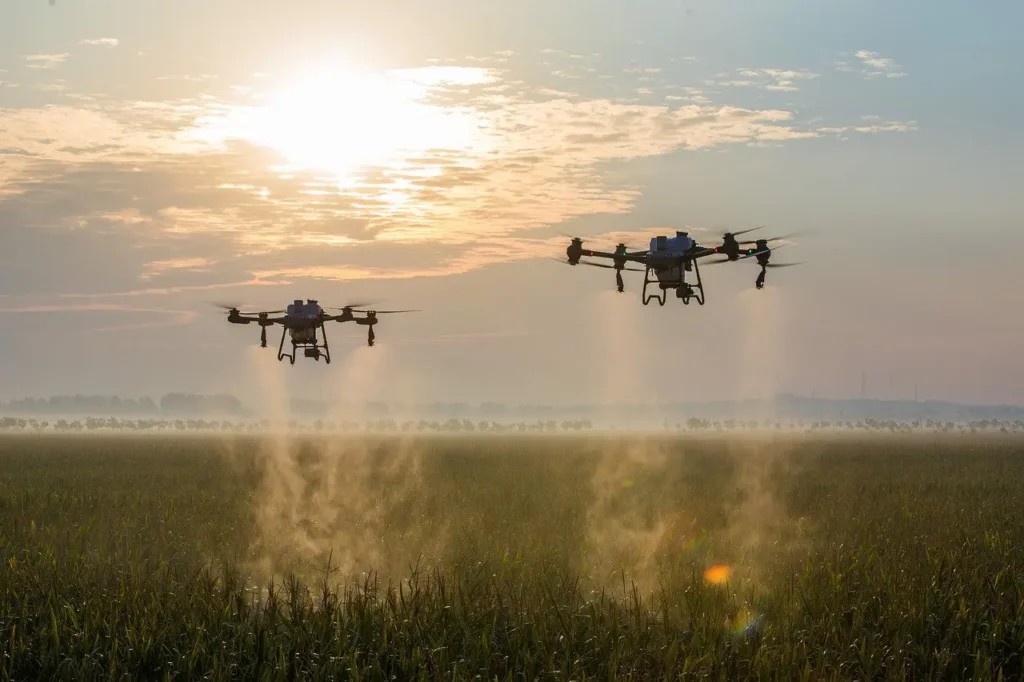
Satellite imagery and drones play vital roles in preserving a watch on vegetation. They estimate how an awful lot they’ll produce. Like high-flying detectives, they seize photographs from above. They reveal to farmers what is going on inside the fields. These pictures assist farmers in seeing if the vegetation is good or if they want a little more care.
Identifying crop pressure, and disorder outbreaks is like giving vegetation a fitness check-up. Drones and satellites can spot symptoms of hassle early. Like a physician, they locate signs earlier than they emerge as a massive problem. When vegetation lacks nutrients, farmers realize where to offer the assistance needed. It’s like having a unique device to hold vegetation wholesome and strong. They realize where to use water, nutrients, or pest management measures. This precision guarantees that assets are used for supporting vegetation. And meet their complete capability and bring the quality harvest possible.
Preserving Water Resources
Preserving water assets is like saving a treasured treasure for the planet. Water is critical for life, and we want to apply it. By solving leaks and the usage of water-saving devices, we will ensure each drop counts. Imagine a cape for water conservation, that’s what planting drought-resistant plants is like. These unique plants are like superheroes which can thrive with much less water. When farmers pick out those plants, it enables storing water for various needs. It’s a clever manner to ensure we’ve got enough water for everybody and everything.
Soil Moisture Monitoring
Measuring soil moisture is like checking if the vegetation is cushy in their soil home. It’s critical due to the fact an excessive amount of or too little water can affect the plants. Recognizing the moisture stage is important for correct plant care. It lets us offer the proper quantity of water. This guarantees that the flora are satisfied and healthy.
To grow to be farming wizards, farmers use sensors and IoT-enabled devices. These devices act like magic wands, assisting farmers in recognizing the soil’s secrets. The degree moisture tiers and ship these records to the farmers in real-time. It’s like speaking to the soil all the time. This guarantees flowers get the proper quantity of water once they want it. The sidekick enables farmer’s agenda irrigation. Real-time tracking is like having a useful buddy for successful farming.
Drip Irrigation Techniques
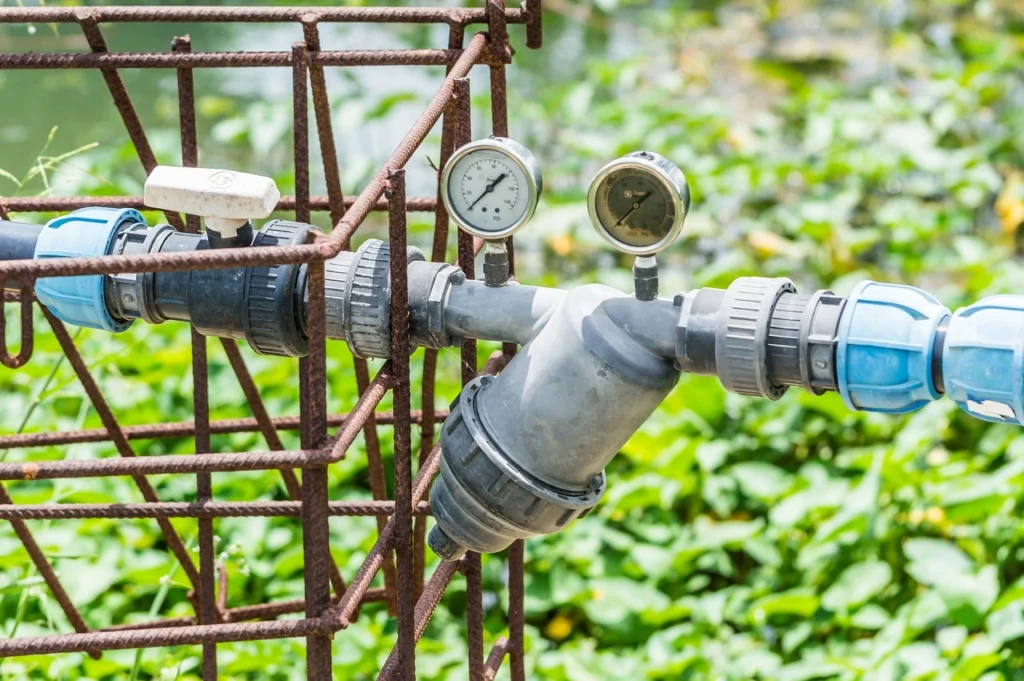
Drip irrigation techniques are one of the modern smart farming techniques. Instead of watering the whole field, farmers use precision techniques. It’s like giving every plant a customized drink, making sure they get the proper quantity of water. This focused technique is no longer the most effective and saves water. Additionally enables plants to develop robust and healthy.
Nutrient optimization is like presenting a unique meal to flowers. Farmers use smart techniques for green nutrient transport. The awareness is on handing over vitamins wherein roots want the most. It’s like an immediate transport carrier for plant growth. Waste ensures the farming technique is minimized. The result is an extra green and green farming procedure. Farmers make certain flowers get the whole thing wished for strong growth. Nutrient optimization is a key issue in boosting crop fitness. It contributes to an environmentally pleasant farming approach.
Water Management Strategies
The adoption of precision sprinklers and green water helpers at the farm. Instead of showering the entire field, those clever sprinklers goal precise areas. Making sure water is going wherever it is needed. It’s like giving the plants a fresh drink without losing a drop. These algorithms examine climate styles to decide what sort of water the plants need. They help farmers to manage water delivery timetables. Incorporating water recycling is to turn water right into a superhero that in no way is going to waste. Farmers accumulate and reuse water, or even seize rainwater to apply later. It’s like giving water a 2nd life, ensuring each valuable drop is placed to excellent use. These new water strategies make farming more smart.
Smart Pest and Disease Management
Smart Pest and Disease Management acts like a vigilant father or mother for crops. Using technology, it spots symptoms of trouble, like a protection shield. Once alerted, it does not warn, it publications farmers on what moves to take. This clever gadget acts as a useful guide to farmers in need. Farmers can take particular green moves to ensure crop health. The era performs a critical position in safeguarding the well-being of crops.
Early Warning Systems
Deploying sensors and based algorithms for pest detection is a superhero vision. These high-tech equipment hold a steady watch over the fields. They recognize pests earlier than they turn out to be a problem. It’s like having a clever shield that in no way sleeps, making sure the protection of the plants. Once those sensors become aware of styles, they cause well-timed preventive measures. It’s like a superhero swooping in only in time to store the day. Farmers can take centered actions, to hold the pests at bay without harming the environment. This precision method minimizes the want for large pesticide use. Selling a more healthy atmosphere and ensuring the well-being of each plant and the environment.
Natural Predators and Biological Control

Smart machines help to detect bugs and weeds becoming the digital protector. These pleasant bugs, like spiders, devour dangerous pests. Making sure wholesome stability inside the fields. Encouraging biodiversity and environmental resilience includes developing many resilient surroundings. The farm becomes a thriving community by welcoming quite a few flowers and animals. This biodiversity no longer simply helps the general fitness of the environment. additionally makes it more difficult for pests to take over.
Farmers lessen reliance on chemical insecticides. It’s similar to selecting a mild technique for plant safety. Instead of sturdy chemicals, farmers are aware of herbal solutions. This guarantees a more secure surroundings for each flower and surroundings. The shift promotes sustainability in agricultural practices. It ensures an extra harmonious dating between agriculture and nature. Farmers select strategies that are mild in the surroundings. This fosters a balanced and green technique for farming.
Integrated Pest Management Techniques
Farmers use crop rotation and entice cropping as clever techniques for pests. It’s comparable to gambling a strategic sport with pests inside the field. By converting the forms of flora in a field, farmers confuse and disrupt pests’ habits. Trap plants act as decoys, diverting pests far from the principal plants. This smart method facilitates guarding the number one plants from pest damage. Encouraging useful accomplice planting practices is set making vegetation crew up for protection. Some vegetation launches chemical compounds that repel pests. At the same time, others appeal to beneficial insects. It’s like fostering a supportive network inside the garden. Wherein every plant contributes to the health of its neighbours.
Monitoring pest outbreaks includes keeping a watchful eye on the fields. Farmers search for symptoms of pest problems and act promptly. By the use of intervention, they could save pests from inflicting extensive harm and ensure a wholesome and bountiful harvest.
Automation and Robotics
Automation and Robotics are like farm helpers that make paintings easier. Machines do duties without farmers doing them by hand. These helpers can plant seeds, water crops, or even harvest. These robots cultivate plants making farming effortless.
Imagine robots operating with farmers, making the farm a high-tech wonderland. They can circulate, the usage of sensors to peer and navigate the fields. These robots are like clever teammates. They support farmers in each step of the process. With automation and robotics, farming has turned into a more efficient field.
Robotic Farming Machinery
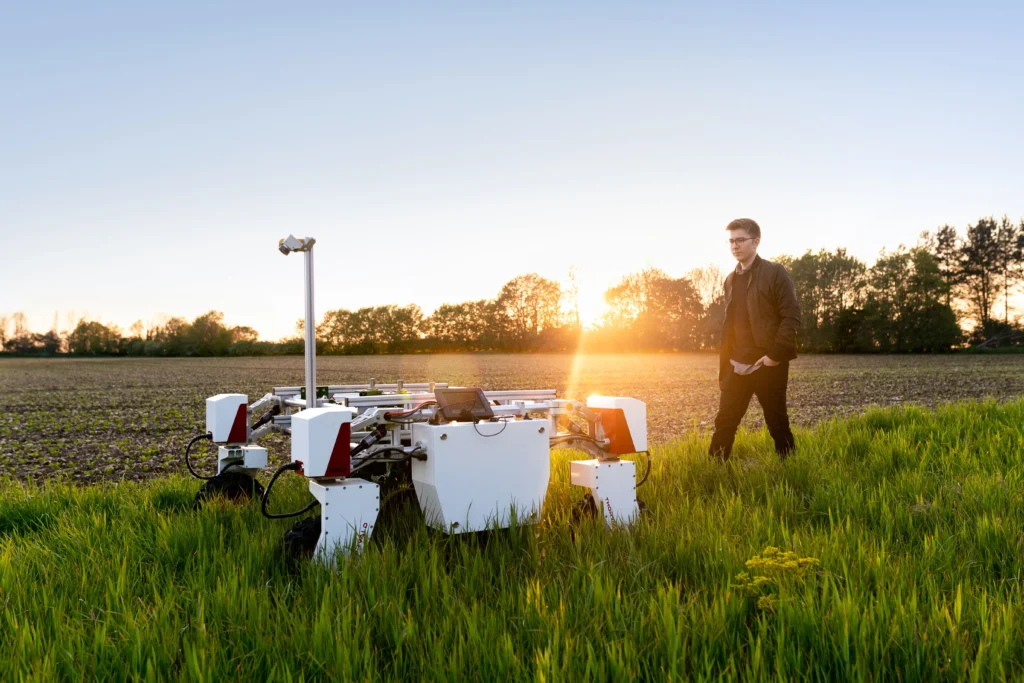
Robotic machinery helps to take over essential responsibilities. These machines can plant seeds, put off weeds, or even harvest plants. They work on their own under the control of humans. They are hardworking assistants who observe particular instructions, making farming responsibilities greater manageable.
By the use of self-reliant machines, farms can lessen the wants of plenty of human people. This robotic machinery makes farming more proficient. Self-reliant machines decorate protection and precision at the farm. Their layout prioritizes protection, permitting farmers to recognize making plans and decision-making.
Farmers can consider that machines manage responsibilities with extended precision and efficiency. This heightened protection degree guarantees stable running surroundings for farmers. With machines handling responsibilities, farmers can divide greater time to strategic decisions. The result is a farm operation that is more secure and greater efficient.
AI-Enabled Crop Monitoring
AI-powered picture popularity is like giving eyes to technology. It looks over the crop’s health and growth. It scans pix of the plants, figuring out any troubles or troubles early on. This monitoring system inspects cleverly. It inspects whether the field is growing healthy. It detects weeds by sensors because they may harm the crops and reduce growth. These smart machines help humans in an interactive way to spot damages in the field.
High-tech gardener that looks after the pesky weeds. Maintaining the plants secure and healthy. Streamlining farm control via far-flung sensing and algorithms is like setting the farm on autopilot. With generations looking over the fields from afar, farmers could make higher decisions. They are digital assistants helping crops grow faster and safer. They inspect fields. This monitoring helps fields grow more green.
Efficient Data Management Systems
Cloud computing is a large digital warehouse for farm records. It replaces storing the entirety on a neighbourhood computer. Cloud-era shops and approaches record online. It’s corresponding to having a virtual farm workplace reachable from anywhere. This makes facts easy and manageable.
Seamless communique hyperlinks with unique farm additives. It’s like connecting those additives via Seamless communique hyperlinks with unique farm additives. It’s like connecting those additives via a digital network. Smart devices and sensors act like a set chat for the farm. Real-time record sharing guarantees anybody is on the same page. Coordination and decision-making grow to be greater green.
Decision-making improves via records-pushed insights. Analyzing records gives a roadmap for pleasant choices. This records-pushed technique facilitates recognizing trends. Optimizing strategies will become workable with these records. Adapting to converting situations guarantees green farm operations.
Advancements in Sustainable Farming
Advancements in sustainable farming practices are like giving the planet an inexperienced thumbs-up. Farmers are adopting green techniques to develop meals, lowering damage to the environment. It’s like an effective change, wherein farming will become a chum to nature.
New strategies are making farms greater green and much less wasteful. With smart technology, farmers use fewer resources, like energy, generating healthful crops. It’s a present-day farming makeover, making sure we’ve enough meals even as we look after the Earth. These improvements are growing a brighter and greener destiny for agriculture.
Vertical Farming and Controlled Environment Agriculture
Maximizing land usage and useful resource allocation is a smart puzzle with the farm. Farmers are locating clever approaches to apply each inch of land. Reducing reliance on insecticides is an inexperienced method of farming.
By the use of herbal strategies and the use of strength, farmers are growing a more fit environment. It’s like a double win, shielding vegetation and the planet at the same time. This shift no longer makes farming greater sustainable. Additionally contributes to a cleaner and greener agricultural future.
Organic Farming Techniques
Promoting soil fitness through herbal amendments is like giving soil a nutritious meal. Farmers upload natural dependents and compost, performing like nutrients for the earth. It’s like a spa day for the soil, preserving it healthfully and geared up to aid colorful plants.
It’s important to maintain nutrient cycles and cut chemical inputs. Farmers make sure that the soil receives the proper vitamins. It’s like a sensitive dance, growing in balanced surroundings for plants to thrive. Meeting patron needs promotes sustainable farming practices. Farmers also offer healthful produce, reaping benefits for humans and Earth.
Collaborative Farming Networks and Data Sharing
Farmers proportion their reviews and thoughts to assist each other. Wherein each person learns something new and solves issues together. Sharing records and nice practices is like developing an e-book for farming success. Farmers alternate suggestions and tricks, making sure each person has the nice information. It’s a crew effort, wherein each person contributes to creating farming productivity.
Strengthening the farming network through collaboration is like constructing a supportive neighborhood. Farmers paintings together, sharing sources and expertise. It’s like a network potluck. Wherein each person brings something treasured to the table. They make the farming network more potent and greater resilient.
Conclusion
Smart farming is like giving agriculture a makeover. The usage of superior technology to conquer conventional challenges. From automatic tracking structures to data-pushed decision-making, it’s approximately arming farmers. With gear to make agriculture extra green and sustainable. This cape extends to maintaining water resources and dealing with pests with precision. It is also introducing automation and robotics to streamline farm operations.
These improvements make farming extra effective. Additionally, it makes contributions to a greener and more healthy planet. Small-scale farmers can be a part of the smart squad. The cost-effectiveness of clever farming guarantees that even the smallest farms can benefit.
Frequently Asked Questions on Smart Farming
How can smart farming techniques enhance crop production?
Smart farming techniques can improve crop production in several ways. By providing real-time data on soil conditions, weather patterns, crop health, and pest infestations, farmers can make informed decisions to optimize irrigation, fertilization, pest control, and harvesting, leading to increased yields and reduced resource usage.
How does precision agriculture benefit the environment?
Precision agriculture practices help minimize environmental impact by reducing the use of water, fertilizers, pesticides, and other inputs through targeted applications based on actual crop needs. By optimizing resource usage and minimizing waste, smart farming contributes to sustainable agricultural practices and the conservation of natural resources.
Are smart farming techniques accessible to small-scale farmers?
Yes, many smart farming technologies are scalable and adaptable to different farm sizes and budgets. While some advanced systems may require significant investment, there are also affordable solutions available, such as smartphone apps for data collection and analysis, low-cost sensor networks, and community-based initiatives for knowledge sharing and capacity building.


